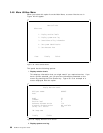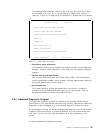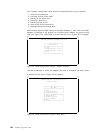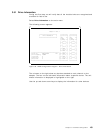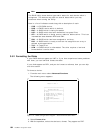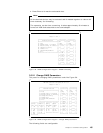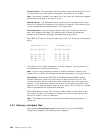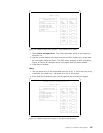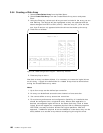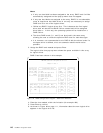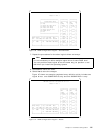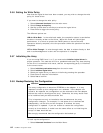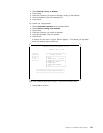Stripe Unit size:
This parameter should be chosen such that the stripe unit size
is close to the size of the system I/O requests. The default is set to 8KB.
Note: Once data is stored in the logical drive, the stripe unit cannot be changed
without destroying data in the logical drives.
Rebuild Priority:
This parameter sets the priority of the execution order of the
rebuild I/O requests with respect to the system I/O requests. The rebuild priority
can be changed without affecting data in the logical drive.
Parity placement:
Parity placement defines how parity is placed in the disk
array with respect to the data. The following figure shows the differences
between Left Symmetric and Right Asymmetric parity placement.
AAA, BBB, CCC and so on are the data stripe units; PP1-3 are the corresponding
parity.
Right Asymmetric (RA) Left Symmetric (LS)
Disk Disk Disk Disk Disk Disk Disk Disk
1 2 3 4 1 2 3 4
PP0 AAA BBB CCC AAA BBB CCC PP0
DDD PP1 EEE FFF EEE FFF PP1 DDD
GGG HHH PP2 III III PP2 GGG HHH
JJJ KKK LLL PP3 PP3 JJJ KKK LLL
The default value is Right Asymmetric. In some situations, you may want to try
Left Symmetric to improve performance.
Note: Once a parity placement scheme is chosen and data is stored in the
logical drives, it cannot be changed without destroying data in the logical drives.
Read-Ahead:
Normally the IBM SCSI-2 Fast/Wide Streaming RAID adapter
transfers data from a disk to its local cache in steps of stripe unit size. This
provides excellent overall performance when workloads tend to be sequential.
However, if the workload is random and system I/O requests are smaller than
stripe unit size, reading ahead to the end of the stripe unit will result in a wasted
SCSI bus bandwidth and wasted disk utilization.
When Read-Ahead is set to OFF, the size of data transfer from the disk to the
local cache is equal to the system I/O request size, and no read-ahead to the
end of the stripe unit size is performed.
Note: The Read-Ahead setting can be modified without destroying data in a
logical unit.
3.5.3 Defining a Hot-Spare Disk
After selecting Create/delete array from the main menu of the IBM RAID
Configuration program, the following screen appears:
106 NetWare Integration Guide



